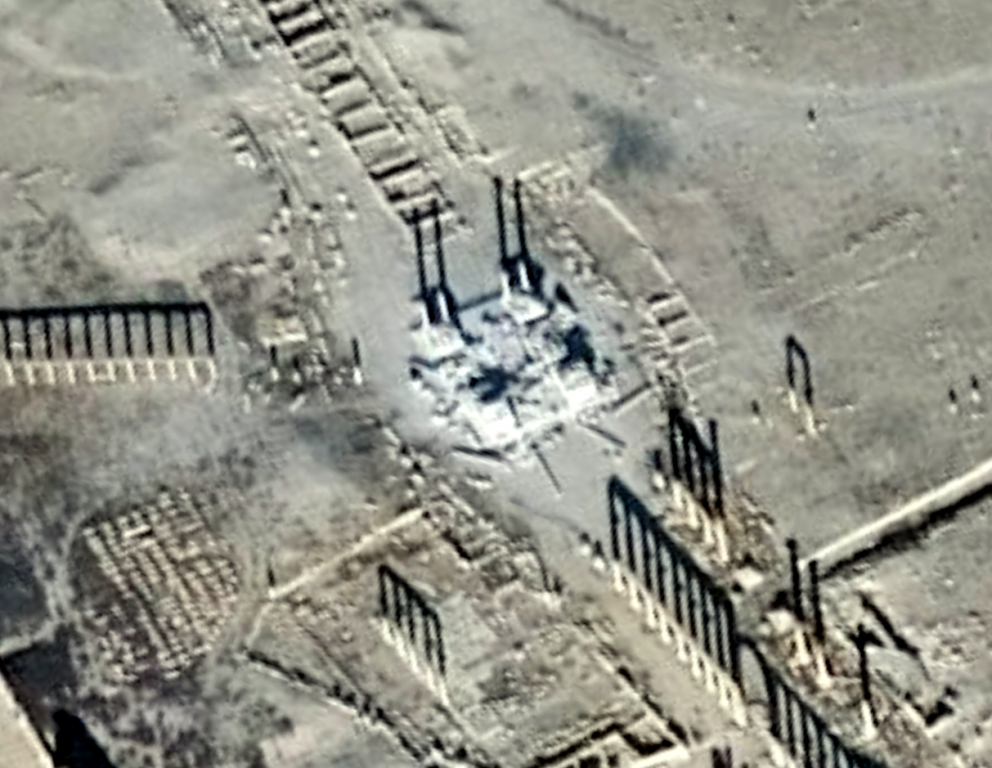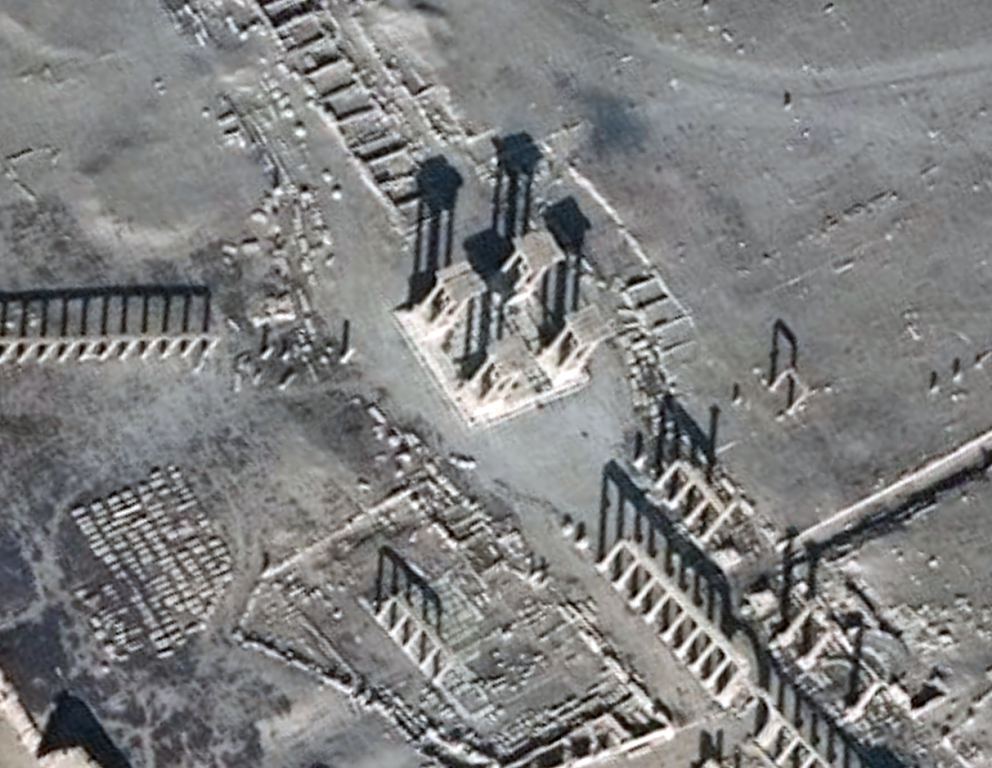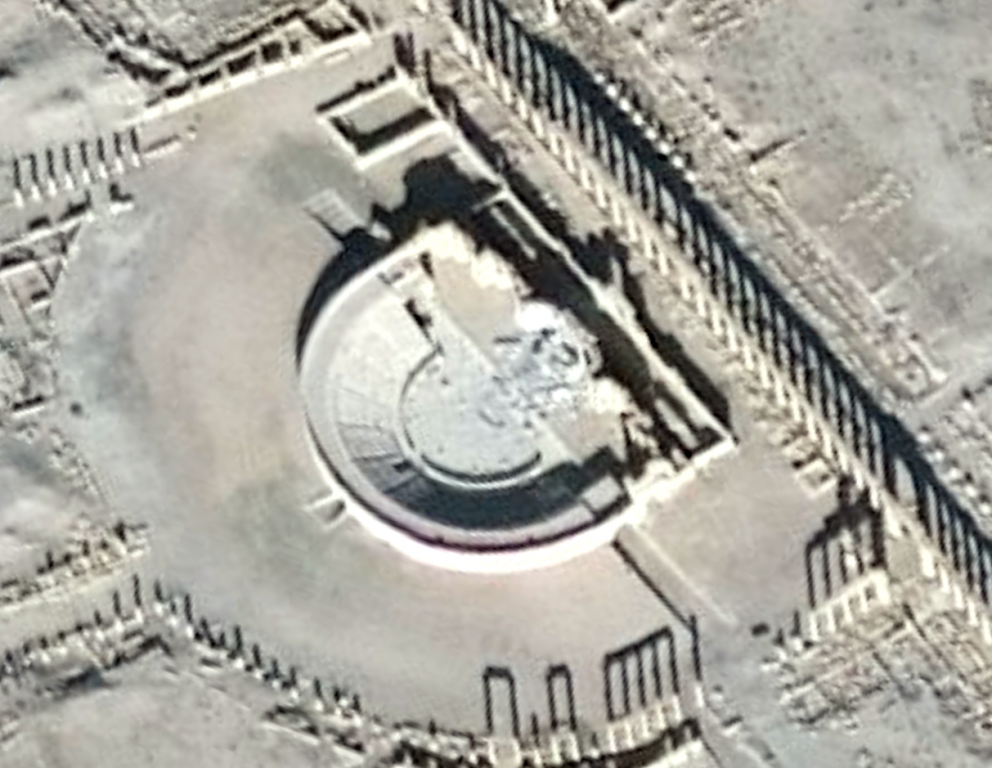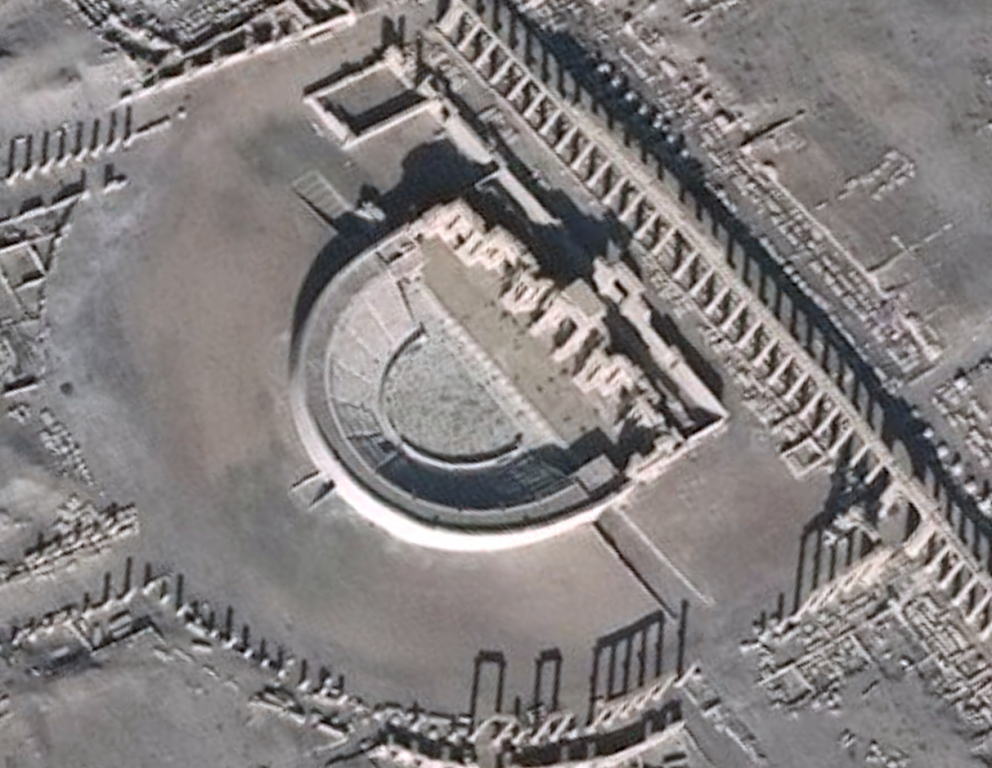Cultural Treasures in Ancient City of Palmyra Destroyed
20 January 2017, Geneva, Switzerland - UNOSAT has obtained new satellite imagery that confirms destruction in Palmyra, an ancient city in Syria that was once a thriving cultural hub and is today a UNESCO World Heritage Site.
“Following request from UNESCO we analyzed the cultural heritage site of Palmyra, Syria, using satellite imagery and we can confirm destruction of the Roman Tetrapylon and damage to the Amphitheatre” says Einar Bjorgo, UNOSAT Manager.
Using DigitalGlobe satellite imagery dated 26 December 2016 and 10 January 2017, UNOSAT observed that two columns of the Tetrapylon remain standing but that the rest of the structure has been nearly completely destroyed, with debris visible on the ground. The stage backdrop of the Roman Amphitheatre has also sustained severe damage, with rubble seen visibly spilling onto the stage.


After the destruction of the Temple of Bel in 2015, these new damages, likely caused by explosives set by violent extremists, remind the world of the real urgency that exists if one is to protect some of the world´s most breathtaking and culturally significant sites.


UNESCO Webnews
UNOSAT Damage Assessment
Media Package
Images 1 and 2 depict the Tetrapylon. Extracted from Worldview 02 imagery dated 10 January 2017 (after) & Worldview 03 imagery dated 26 December 2016 (before), copyright DigitalGlobe 2017.
Images 3 and 4 depict the Roman Amphitheatre. Extracted from Worldview 02 imagery dated 10 January 2017 (after) followed by Worldview 03 imagery dated 26 December 2016 (before), copyright DigitalGlobe 2017.

